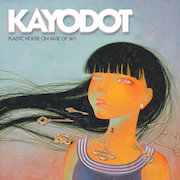Our romantic fascination with the 1980s and their neon-lit aesthetics has finally breached into the mainstream. After simmering on the brims of the globalised cultural landscape, its magic was reaped and repackaged into a sickly nostalgic dose of TV entertainment, ready for a golden binge of escapism. The phenomenon of Stranger Things gave the eighties that final push into the present and a wider collective consciousness: a retro utopia, an endless source of comfort distilled by forgetfulness and selective perception. A promised age that never was.
And amidst this inundation of pop-cultural tropes from another time in a society ever so concerned with past successes, the show’s pristinely authentic music emerges as a bright beacon that converses with our ids. Over-the-top synthesizer themes are pressed into minds, the period’s signature music in its simplest form made concentrated and irresistible. Undoubtedly, existing bands will resurface, their notions of “darkwave” and “synth-punk” suddenly fashionable, and others will reshape their sounds to fit with the decrepitly fresh stylistic ripples. While superficially fitting in this description, Kayo Dot, Toby Driver’s main vessel of experimentation, will remain unaffected and all the more compelling.
Since 2014’s enigmatic Coffins on Io, Kayo Dot has been entertaining that same synthesiser-dominated vocabulary, but their skewed semantics remained unlike any other and in contrast with retro-obsession. Similar to the band’s earlier records that, despite appearances and a cult metalhead following, were only ostensibly metal, Plastic House on Base of Sky (PHOBOS) is too alien to be considered even a subversion of a synthwave record. Glossing over the songs, one will hear the usual vibrato of high pitched analogue synthesisers and ersatz pulses painting unstable rhythms, dissonant landscapes, and oddly catchy phrases. Drums, guitars, and bass lines morphed by effects blurring the artificial and the organic.
Yet beneath the album’s saccharin exterior, complex structures and timbre variations soar and meld. They add to the body of Driver’s controlled, bold compositional framework driven by mysterious cogs and fundamentally inspired by Japanese composer Susumu Hirasawa. Indeed, when performed live in a power trio with Keith Abrams and Ron Varod, songs from Plastic House on Base of Sky bare their innards and show the transformations of Driver’s method. When needed, they can flourish into an aggressive crescendo of riffs and solid rhythms and blend with their paradigmatic opposites from earlier releases such as Hubardo. Each detail meticulously placed and composed, yet bitterly candid.
The mood of the songs on the album is instead dimmed and almost mournful. Thus the aptly named opener ‘Amalia’s Theme’ and its misleading progression of captivating synth chords paint the outline of a concept born from a deeply buried, inexplicable longing. A concept in which Jason Byron’s oblique, suggestive lyrics resonate through Driver’s mercurial voice ranging from near-falsettos to exaggerated baritones. It’s an equally grating and involving soundscape that masks unknowable scars within the ambiguity of magic realism concerned with a future (or present?) dystopian, dying universe. Emphasized by the open ended approach and an inherently expressive style, Driver’s tragic but empathic idea of the world appears exposed and fragile.
That same metaphysical dissonance is reflected on the album’s centerpiece ‘All the Pain in All the Wide World’. The synths cut hard and strident, incising abrasive letters until they finally turn into a maelstrom of counterpoints. You’re talking, but I’m not listening, I’m only talking, you miss the point, you’re just not listening. Driver delivers these ad-libbed lines with embittered conviction while the composition convolutes, reassembling itself, only to disappear into a well of echoes and distorted, clashing vocal harmonies. After ten minutes of struggle and Herzogian cynicism, ‘Magnetism’ sounds cautiously optimistic, driven by multidimensional post-punk flows and warm melodies whilst the martial intensity of jangly guitars battles with canorous synths.
Even if PHOBOS ultimately lacks the painfully poignant beauty found on pieces such as Coffins on Io’s ‘The Mortality of Doves’, one of its most touching moments arrives with a muffled, barely heard shoegazey chord on ‘Rings of Earth’ that is made that much more powerful by its perceived secrecy. A feeling of calm despair that will segue into the closing subdued miniature; a shy ballad that leaves Driver’s voice in a vacuum, accompanied only by sparse instrumentation.
Plastic House on Base of Sky is neither a logical step in the evolution of Kayo Dot, an amalgamation of what the band ever was, nor an indication of where the band will go. Instead, it’s a sound sculpture in motion, a snapshot of Driver’s incessant desire for progress and experimentation. Just one of the countless positions in the swing of a pendulum. Ultimately, a record open to mystification and welcoming to our own visions.


